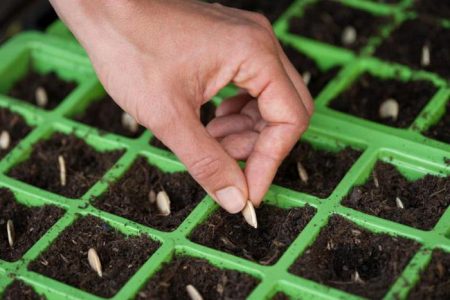 It seems that what can be so difficult in growing pumpkins? Meanwhile, not everyone, even an experienced gardener, especially in regions with a short summer, can grow this culture.
It seems that what can be so difficult in growing pumpkins? Meanwhile, not everyone, even an experienced gardener, especially in regions with a short summer, can grow this culture.
It is important here not to "miss" with the choice of variety, as well as with the timing of planting pumpkins both in open ground and in seedlings.
Features of pumpkin cultivation
Pumpkin loves warmth and light, and in many regions of Russia, due to the climate, late-ripening varieties of this vegetable do not have time to ripen. Therefore, for the middle zone, regions of the European North, Siberia, only early-ripening varieties and mid-season pumpkins should be selected.
In the south, late varieties also have time to ripen, while crops are usually sown there immediately in the ground. Hard-edged, large-fruited and nutmeg pumpkins are cultivated in these parts. For the northern regions, most of the varieties of tasty and sweet muscat pumpkins, due to their late ripening dates, are not suitable.
In late pumpkins, the growing season varies from 125 to 170-180 days, therefore, even when sowing seedlings in the regions of Siberia, as well as in the European North (Leningrad, Pskov and other areas of this region), most often it is not possible to get a crop. But early ripe (90-105 days) and mid-ripening varieties (105-124 days) are suitable, but we must not forget about resistance to temperature changes and taste.
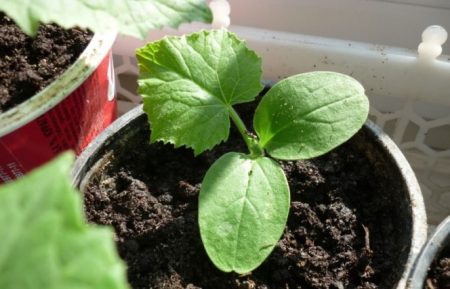
In the description of varieties, the main characteristics are always indicated, therefore, when choosing, take into account:
- ripening dates;
- taste qualities;
- keeping quality (if you plan to store the vegetable).
In regions where the summer is short and temperatures are not stable, heat-loving crops such as pumpkin are first grown by seedlings, and then planted on ridges. You can try to grow a sweet and tasty nutmeg pumpkin, just pick a medium-ripening variety, and also take the fruits in time before the cold and leave them to ripen at home.
When to sow a pumpkin
Heat-loving pumpkin is sown, taking into account the climate of the area, weather conditions, characteristics of the variety. The optimum temperature for planting (seedlings or seeds in open ground) are indicators + 14ºC ... + 16ºC.
In the south, the soil can warm up to this temperature already in April, but much depends on the particular year. Nowadays, even in warm regions - Krasnodar Territory, Stavropol Territory, there may be sudden returns of cold weather, and this also needs to be taken into account. In the middle lane and other areas to the north, as well as beyond the Urals, stable heat comes in May.
And if in the south the pumpkin is sown immediately in the beds, then where the summer is short, you will first have to sow the seeds at home or in special warm greenhouses, and only then transplant the plants into the open ground. Given the fact that pumpkin seedlings should grow in such conditions no more than 28-30 days, the timing of sowing in pots or hotbeds is also calculated.
The calculation will be simple: if pumpkins move to the beds in late May or early summer, the seeds are sown in the twentieth of April. If they plan to plant a pumpkin in mid-May, then, accordingly, the timing of sowing seeds for seedlings is also shifted to mid-April.
The plant does not tolerate the transplant very well, so in order not to damage the root system and provide the pumpkin with maximum comfort, seeds are sown immediately in separate containers.You can prepare the soil yourself using turf soil, peat, compost. If necessary, add river calcined sand. It is necessary to disinfect the soil by spilling it with a saturated solution of potassium permanganate.
As containers for pumpkin fit:
- plastic cups (with a mandatory hole in the bottom);
- wooden boxes (but in this case you will need to be careful when planting plants in a permanent place);
- peat pots.
The latter option is the most successful, since when transplanting, you do not need to remove pumpkins from the pots, but directly plant them in the holes. Pots should be voluminous, dimensions - 7x7 cm. In small containers, pumpkin seedlings will be cramped, seedlings will be weak and frail due to lack of nutrition.
In April and May, the lighting is already good, but in any case, the pumpkin needs to determine the best place on the southern windowsill. Watering should be moderate in order to prevent drying out of the earthen coma and its excessive waterlogging.
It is recommended that approximately two weeks before planting, begin to harden the plants, taking them to fresh air. Suitable balcony, loggia, porch, but at the same time control the air temperature. Such hardening will benefit the pumpkin, seedlings will adapt faster after planting.
What the moon advises
When planting vegetables, many gardeners take into account not only the region’s climate, weather, but also the moon, which also has an effect on plants.
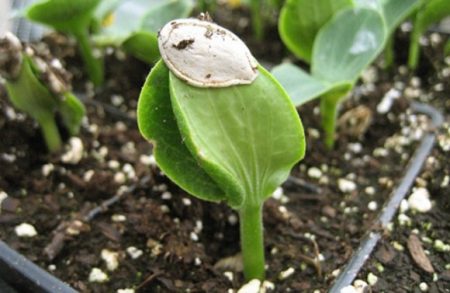
The lunar calendar is compiled for each year and it describes in great detail all the days that are favorable for planting a certain crop, as well as periods when you can’t do the work.
In relation to pumpkin, the rule applies (as for all vegetables for which the ground part is eaten) - it must be sown on the growing moon. Then, with proper care, the crop will be provided. And one more fact to remember: in the full moon, new moon all work related to sowing seeds, plant transplants is excluded.
What does the moon “say” for 2018? Pumpkin can be sown in the period from April 18 to 21, as well as from April 25 to April 29. In the south, these days are suitable for sowing germinated seeds immediately in the beds, but in the regions of the North-West, in the Urals or in the Moscow Region these days you can soak the seeds and then sow them for seedlings.
Favorable days in May: from May 17 to May 18, from May 23 to May 28. These days, subject to stable warm weather, you can plant pumpkin seedlings in a greenhouse or on ridges. In Siberia and the Urals, heat usually comes later (but it all depends on the particular calendar year), so here it is better to pick up the June days for landing: June 1 and 11.
As for the unfavorable days, you need to “rest” from the garden and planting in April: from 15 to 17, from 22 to 24 and 30 of April.
Also, according to the calendar of the phases of the moon, days from May 6 to May 9, from May 14 to May 16, from May 19 to 22 and May 29 are not suitable for planting. It is convenient to draw up an approximate work plan, mark the main days so that there is no confusion. Whether or not to follow the lunar calendar, each gardener decides for himself, but practice shows that the astrological forecast provides some help.

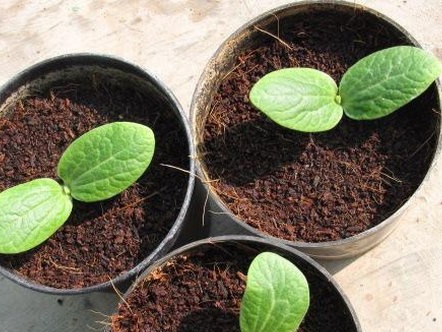
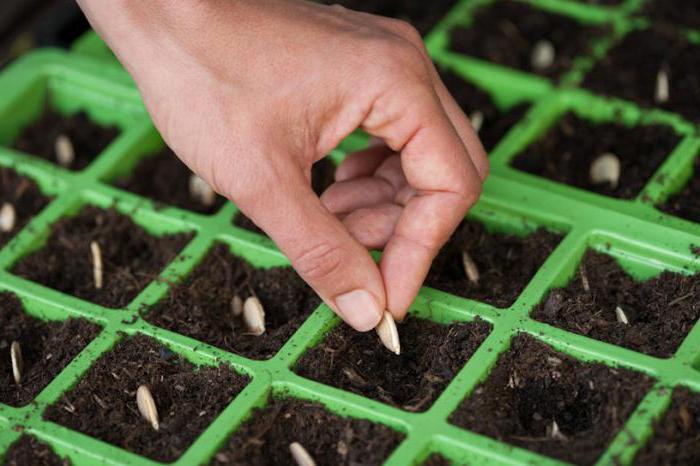

 Pumpkin and Zucchini Disease Mosaic
Pumpkin and Zucchini Disease Mosaic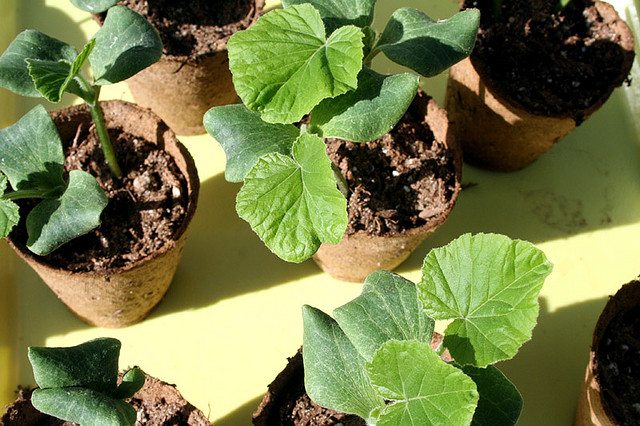 The timing of planting pumpkin seedlings in the suburbs of 2016
The timing of planting pumpkin seedlings in the suburbs of 2016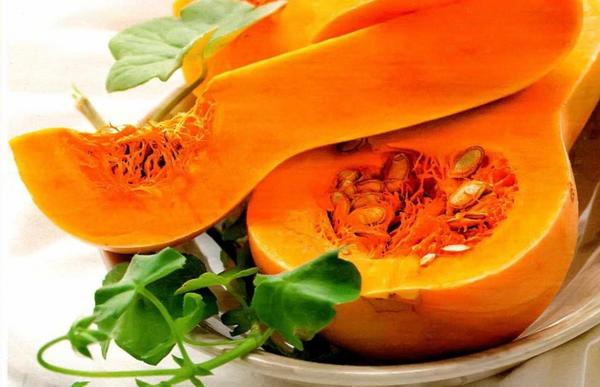 When to plant pumpkin for seedlings in 2016 according to the lunar calendar
When to plant pumpkin for seedlings in 2016 according to the lunar calendar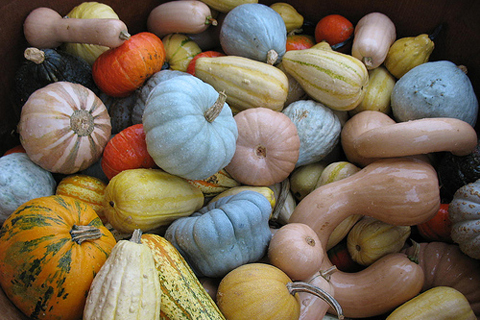 About the timing of pumpkin harvesting in the suburbs
About the timing of pumpkin harvesting in the suburbs
Thanks for the good advice, I always adhere to the lunar calendar,